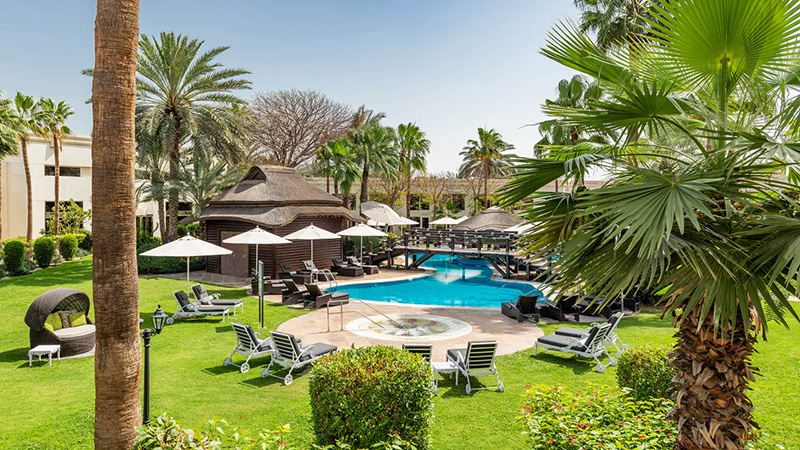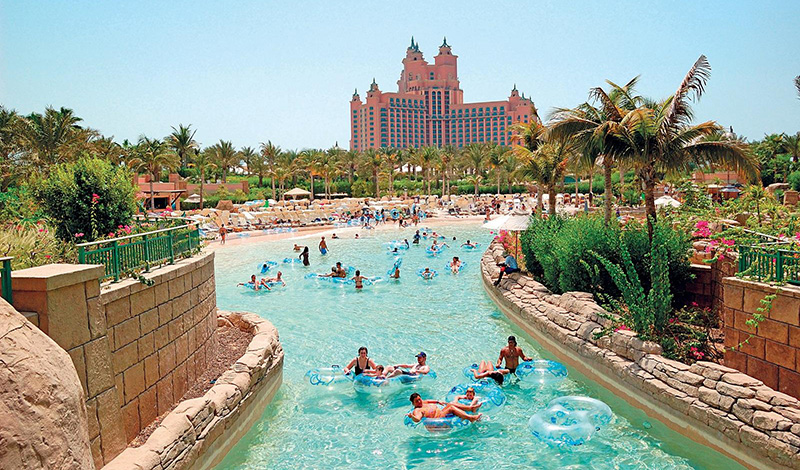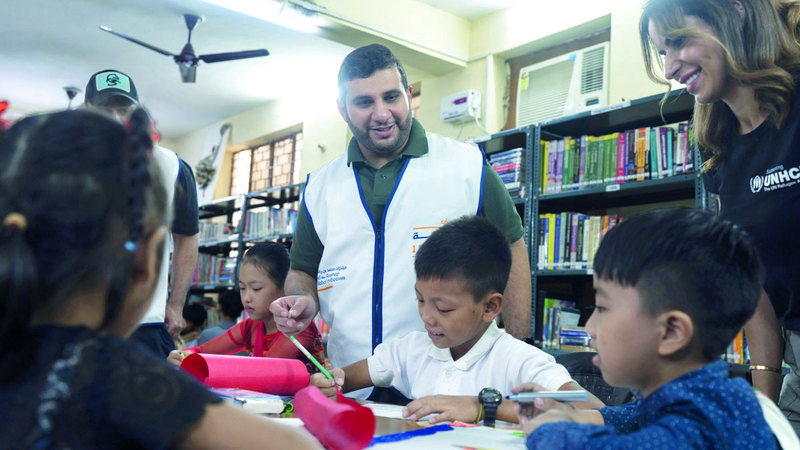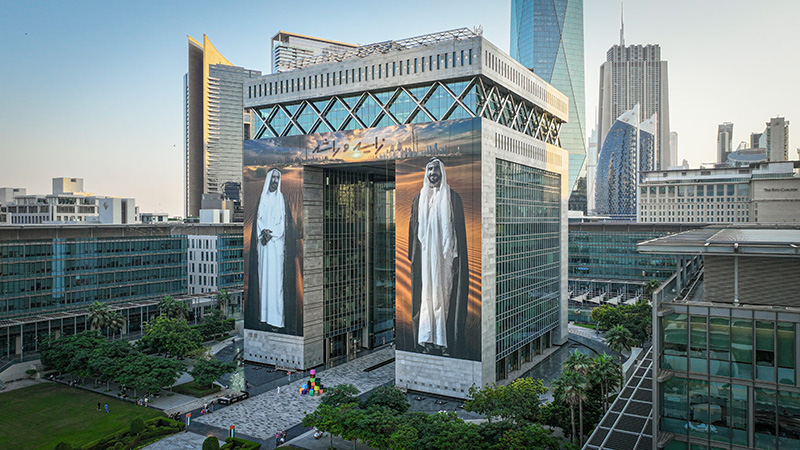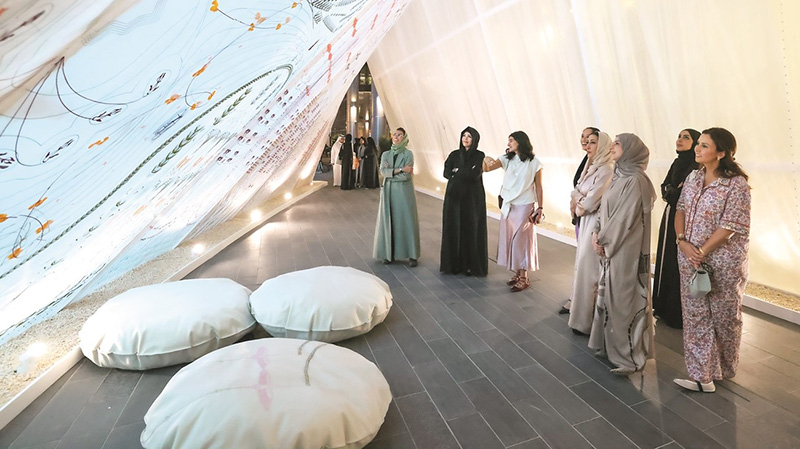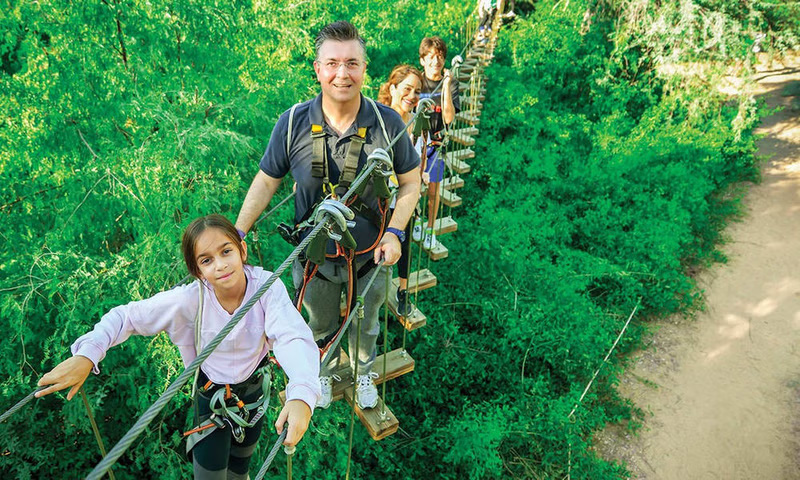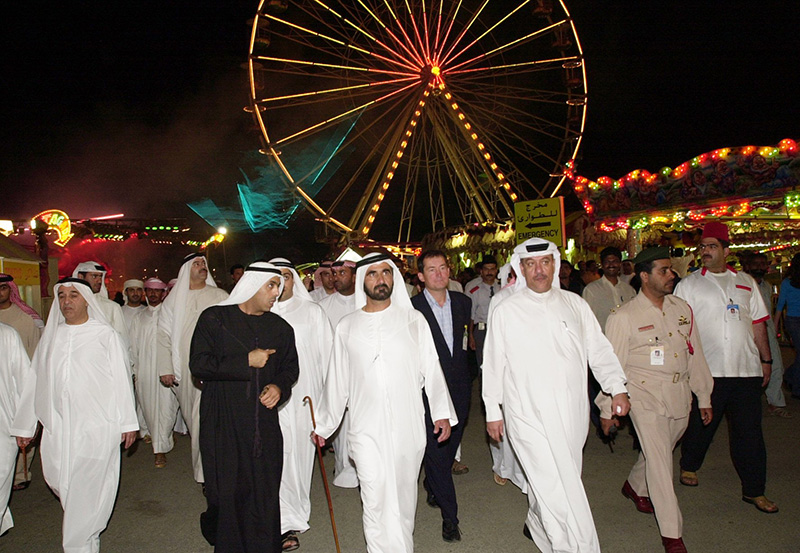
In each season, Dubai flings open the gates of its Global Village, welcoming millions of visitors from the Emirates and abroad to an experience that blends entertainment, culture, and commerce. What looks like a festive celebration is underpinned by a clear developmental and economic vision. The concept began in 1996 as a modest trial project and over time evolved into a well‑organized seasonal fixture in the emirate’s entertainment ecosystem.
The inaugural experiment in 1996 was described by His Highness Sheikh Mohammed bin Rashid (then Crown Prince of Dubai) as “a touristic and cultural meeting and a blending of Arab and global traditions on Arab soil.” Despite scant resources, a budget of barely 100,000 dirhams and a handful of wooden booths borrowed from the Dubai Airshow set along Khor Dubai, the trial succeeded, proving there was a hungry audience among Dubai’s residents and tourists for such an offering. H.E. Mohammed Al Gergawi, then General Coordinator of the Dubai Shopping Festival, later called it “an attempt to fulfill some of Disney’s dreams with fireworks and an open-air market.” While the immediate goal was to enrich the Shopping Festival, the larger idea was far more ambitious: to transform a commercial space into a cultural dialogue incubator expressing Dubai’s future vision.
Global Village’s first full season opened in 1997 and drew about half a million visitors. By 1998 that figure had jumped to 2.1 million, and after 2007 the annual attendance stabilized between roughly 4.2 and 4.8 million. These early numbers hinted at something important: Dubai wasn’t just hosting an entertainment event, but was laying the groundwork for an entirely new economic sector centered on cultural entertainment.
On the evening of April 3, 1998, Sheikh Mohammed bin Rashid Al Maktoum himself inaugurated the second season, cutting the ribbon before more than 50,000 guests on opening night. That night Khor Dubai, a former old trading port, was transformed into something resembling a futuristic city square. The Ruler spent about two hours walking among twenty country pavilions, examining traditional crafts and clothing and witnessing the moment “where economy meets identity,” as one observer put it.
Between April and the end of the 1998 season, Global Village recorded roughly 1.2 million visitors, nearly double Dubai’s population at the time (around 750,000). Attendees spread out over twenty pavilions, representing one of the first miniature cycles of globalized trade. Daily crowds averaged about 50,000 people, a scale that forced the Dubai Ports Authority to introduce free shuttle services and extra bus parking.
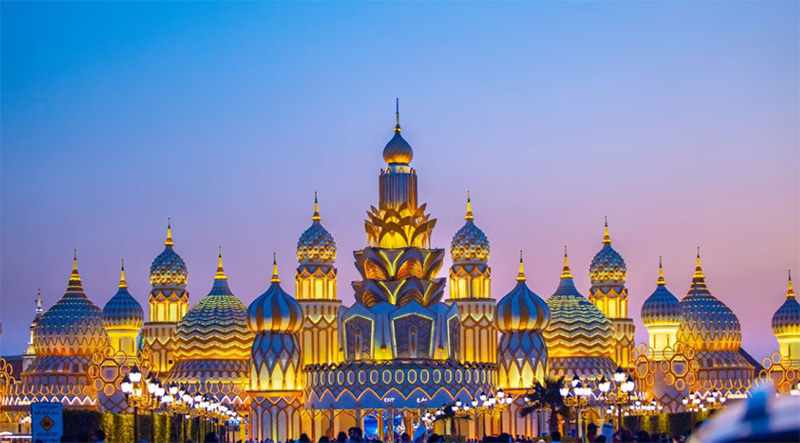
The Events Economy: From Kiosk to Stage
Dubai’s events economy has come a long way from those first wooden kiosks along the creek bank. Each new season of Global Village has expanded its scope, reshaping value chains in retail, hospitality, and even aviation. For example, after Deira City Center opened alongside the Dubai Shopping Festival, many in the business community doubted the city could sustain enormous malls. Global Village proved otherwise. As H.E. Mohammed Al Gergawi recalls, “Global Village’s returns can’t be measured by square meters but by its ability to generate a sustainable flow of visitors.” In other words, the model combined entertainment, culture, and retail into a single experience that keeps people in Dubai longer.
The scale is astonishing. What started as 18 kiosks in 1997 has grown into a site of about 1.6 million square meters, with roughly 3,500 retail outlets and over 40,000 live performances in one season. That makes Global Village the fourth-largest entertainment destination in the world by average daily attendance. This human mass has had a direct impact on Dubai’s tourism economy. According to the Department of Tourism and Commerce Marketing, cultural events (led by Global Village) helped lift tourism’s share of Dubai’s GDP to 11.5% in 2019, a proportion higher than comparable destinations like Singapore or Barcelona.
A crucial element behind this success is the financing model. Since Season 26 (2022-2023), sponsorship and pavilion rental revenues now cover roughly two-thirds of operating costs. The government’s role is largely confined to building infrastructure and setting regulations. This Public–Private Partnership (PPP) approach, in which investors share risks and rewards while the state retains ownership of assets, has become the backbone of Global Village’s growth.
The benefits spill over into entrepreneurship as well. Since 2021, an agreement between Dubai SME and Global Village has reserved 25 kiosks each season for Emirati entrepreneurs at highly concessional rents. This effectively turns Global Village into a testing ground: young businesses can try out products before millions of visitors, before moving on to permanent markets.
These factors have driven explosive growth: visitor numbers jumped from 7.8 million in Season 26 to 10.5 million in Season 29 (which closed in May 2025). To accommodate the crowds, Dubai’s Roads and Transport Authority (RTA) added four seasonal bus routes directly linking Global Village to metro stations and Dubai International Airport. More than half a million passengers used that network in the 2023–2024 season alone.
The economic impact is clear. A study by the Dubai World Trade Centre found that each dirham invested in organizing a major entertainment event in Dubai generates over two dirhams back in the hotel, retail, and transportation sectors. In other words, Global Village’s circular spending model, private capital funding public infrastructure, pumps fresh liquidity into the local economy without burdening the government budget. Revenues from the pavilions and shows quickly flow into hotel bookings and duty-free sales, upending the old view of events as mere consumption and treating them instead as production assets that fuel economic growth.
Urban and Economic Transformation of Global Village
The physical footprint of Global Village has also grown dramatically. It began on the banks of Khor Dubai in 1996 as a small cluster of wooden booths, a tiny seed planted in fertile ground. By the first official season in 1997 it had spread across both sides of the creek and attracted over half a million visitors. As crowds kept growing, Global Village moved several times along Dubai’s waterways: for years it operated near the heritage district of Al Shindagha and Oud Metha, a setting that consciously linked the event to Dubai’s historical landscape.
In 2006 a major move to a vast tract along Sheikh Zayed Road (Exit 37), next to the Arabian Ranches, expanded the site enormously. Its land area jumped to over 17 million square feet, and the number of country pavilions rose to around forty, each showcasing a different culture. Integrated into the larger Dubai Lands entertainment area, the park now theoretically accommodates tens of thousands of guests each night from October through May. Its scale even places it squarely within the “night-time economy” promoted by UN reports on sustainable cities, a point underscoring how event destinations can be part of a modern city’s infrastructure.
The visitor milestones speak for themselves. In its 27th season Global Village welcomed nine million guests from more than 90 cultures, a record leap that cemented its image as a global meeting point. One year later, Season 28 broke the ten-million mark, prompting management to extend the final week to meet popular demand. The 29th season (ending May 2025) featured over 40,000 live performances and hundreds of rides and attractions, the widest entertainment program the venue has offered to date.
Behind these crowds lie significant economic gains. Data from a past season (2018–2019) showed nearly three billion dirhams in commercial transactions inside Global Village itself. This volume of trade signals the project’s ability to recirculate local spending and enrich value chains across hospitality, retail, and transport in Dubai.
From Economic Department to Dubai Holding: Entertainment as Soft Power
Global Village started as a seasonal initiative under Dubai’s Department of Economic Development, part of the Dubai Shopping Festival lineup in the 1990s. In its early days (starting 1996), it was directly overseen by the government as a temporary event to boost trade and tourism. Over the years, however, the idea ballooned into a major entertainment entity attracting millions from within and beyond the UAE.
With that shift, Global Village moved under the umbrella of Dubai Holding, and today it is run by Dubai Holding’s entertainment arm (Dubai Holding Entertainment), which also oversees mega-attractions like Dubai Parks and Resorts, Ain Dubai, and Roxy Cinemas.
Yet the true value of Global Village isn’t measured by sales figures or spending. As American scholar Joseph Nye would recognize, its power lies in soft power, the ability to attract and persuade without coercion. From the moment a visitor steps in, they encounter a rich sensory tapestry: the strains of a Tatar violin mixing with flamenco song, the aroma of Ethiopian coffee merging with Indonesian incense. In the words of one Polish researcher who studied the site, Global Village is “a cultural resort” that weaves cross-border networks of relationships etched into memory, not budgets.
These are like tiny social contracts forming every day. A tourist from Stockholm might buy Emirati dates, then marvel at a Moroccan band and pick up some Indian silk souvenirs. They are not just spending; they are spontaneously agreeing to share values of hospitality and mutual respect. A recent paper on the Medium platform even calls this scene “a live showcase of soft power,” because countries display their stories, not their passports, to a global audience. At the end of the night, the visitor takes home trinkets, but the deeper souvenir is the realization that the world can be navigated with curiosity rather than conflict. This symbolic capital, the confidence that cultures can meet, appreciate each other, and co-create understanding, is Global Village’s gift to Dubai’s brand. Urban branding experts say it enables the city to shift from being a marketplace of goods to a marketplace of ideas and values.
Entrepreneurship and the Economy of Meaning
Since 2017, Global Village has also played a direct role in nurturing local entrepreneurship. When the Mohammed Bin Rashid (MBR) SME Foundation launched a program to support entrepreneurs in September 2017, Global Village entered a partnership to reserve 30 prime locations in the park each season for Emirati startups. With nominal rents and additional funding and training support, these entrepreneurs are able to test their ideas and products in front of millions of visitors before expanding into permanent retail spaces. In effect, the venue has become an open-air business accelerator, combining local capital with an international tourist audience in a low-risk environment under the bright lights of media attention.
But the economy of Global Village goes well beyond simple buying and selling. The visitor experience builds in layers. At first, one might call it a consumption economy: people wander through the food and craft pavilions, sampling treats and souvenirs. Almost immediately, it shifts into an experience economy: they capture photos of musical performances, participate in global celebrations, and so on. The real leap comes when one transcends these layers into what could be called the economy of meaning. Here, spending transforms into a long-term, symbolic investment, creating a stock of stories, memories, and impressions about the world’s cultures.
An example makes this clear. In February 2023, Global Village hosted “UAE Innovates,” a government expo on sustainability solutions. Visitors could interact with homegrown innovations while representatives from around the world took part symbolically. This showed that Global Village isn’t just selling goods, it can also be a platform for exchanging knowledge and ideas.
Because the venue literally rewrites itself every winter, urban planners liken Global Village to Italo Calvino’s idea of “the city of stories.” Instead of being defined by concrete walls, the destination is shaped by sequences of events and narratives. Each pavilion, market, and show is like a chapter released annually in an open book, a design that keeps the project fresh and avoids the obsolescence that has dogged many static theme parks. In this way, local entrepreneurship, a meaningful visitor economy, and dynamic urban philosophy all weave together into a single fabric. The lesson is that human partnerships, not just financial budgets, drive the future of cities, especially when diversity itself becomes as solid an infrastructure as concrete and steel.
Leading Experimentation and Tomorrow’s Stakes
H.E. Mohammed Al Gergawi often repeats the guiding lesson from Sheikh Mohammed bin Rashid: “The biggest risk is not taking any risk.” This philosophy has become an operating principle for Global Village. The park is in a constant state of creative renewal: each season, about a third of its content is refreshed. Old pavilions are closed and new ones opened; entertainment and attractions are continuously updated. This happens without fear of losing the event’s identity, because here risk is treated as a governance tool, not a threat. Thanks to this perpetual reinvention, Global Village maintains its rising momentum year after year, proving its ability to redefine entertainment as an open, experimental cultural lab.
No longer is Global Village just a winter spectacle on Dubai’s calendar, it has become part of the city’s essential infrastructure, balancing the economic impact of ports and airports. In an era where hard capital (like buildings and machines) is increasingly giving way to symbolic capital, Dubai has bet on human diversity as a reliably rewarding economic resource. People from dozens of cultures converge in Global Village without needing advance visas, and in the process they discover what unites them despite their different backgrounds.
Since opening in 1997, Global Village has welcomed over 100 million visitors (according to official stats through May 2025). Each season reaffirms that diversity isn’t an organizational burden to manage, but an opportunity to reshape the economy around cultural and value exchange. As American poet Walt Whitman wrote of embracing “countless multitudes,” Global Village reminds us that the future is not a straight line extending from the present, but an open space ready to accommodate ever greater plurality under one roof, a space that Dubai expands a little more with each passing year.


